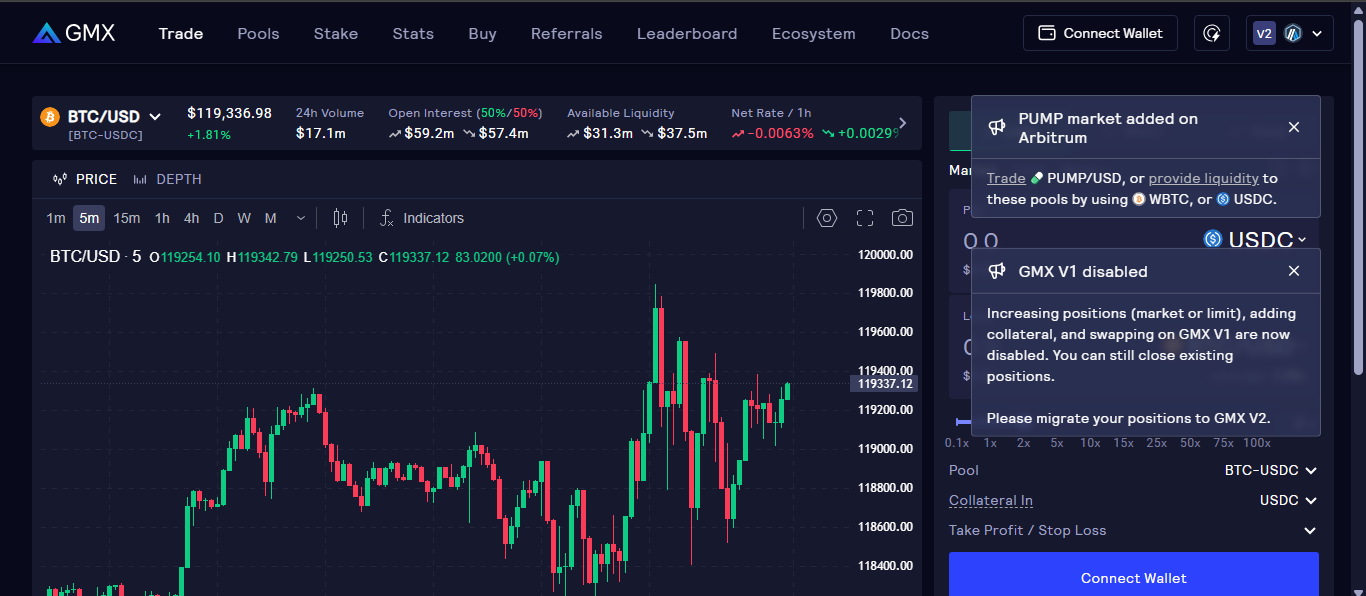GMX Arbitrum review - deep DeFi liquidity with real risks

GMX launched on Arbitrum back in 2021 and quickly became the go-to for on-chain leveraged trading. It ditched traditional order books for a shared liquidity pool (GLP) that lets traders go long or short while LPs handle the other side. That setup keeps trades smooth but also means LPs directly eat losses when traders win.
How GMX actually works
On GMX, you connect a wallet, pick your leverage up to around 50x, set stops or take profits, and the smart contracts do the rest. Instead of matching with another trader, your position runs against the GLP pool - a mix of BTC, ETH, stablecoins and some altcoins.
Fees come from small execution costs plus funding rates that shift with long-short imbalances. This keeps markets balanced but can get expensive fast if funding spikes.
Liquidity depth and trading volume
The GLP pool on Arbitrum often sits above 300 million dollars, backing daily volumes from 100 to 300 million. That’s huge for DeFi, putting GMX right up with mid-tier centralized futures desks. For bigger trades, it means tight execution without insane slippage.
What’s in it for liquidity providers
LPs mint GLP, basically handing assets over to the protocol. They earn a cut of all fees and funding payments. Yields float from 15 to 25 percent APR depending on market churn and how many traders lose money. When the crowd does well, LP returns can drop or even slip negative.
On top of that, staking the GMX token itself gives more protocol fee share. Together, this makes sure people keep adding liquidity and voting on upgrades.
Security, audits and DeFi risks
Smart contracts were audited by Quantstamp and ABDK. GMX also ties into Chainlink for prices, cutting front-running or oracle attacks. Some insurance exists via partners, but it’s partial - in DeFi, risk never disappears. Bad liquidations under wild volatility or smart contract bugs are always possible.
Community and user flow
The interface is clean with TradingView charts, instant positions and easy wallet tracking. Governance votes on fee tweaks or new features come straight from GMX stakers. It’s built a tight community on Twitter, Discord and forums that actually drive updates.
Pros & cons
Pros
- Massive pooled liquidity for big trades
- Real yields for LPs and GMX stakers
- Fully on-chain, no KYC ever needed
- Good security stack and engaged governance
Cons
- LPs take directional hits if traders win big
- Funding fees can jump hard in crazy markets
- Not beginner-friendly - you have to watch collateral and liquidation lines
Bottom line - king of decentralized perps, but know your risk
For serious DeFi traders, GMX is the benchmark for leveraged plays without a central gatekeeper. The pooled model means trades are fast and deep, while LPs and stakers keep the protocol humming. If you’re comfortable managing liquidation and funding swings, it’s a powerful alternative to centralized futures.
If not, or if you’re just dabbling, the risks here are real. DeFi’s still a wild place, and GMX is no exception.
Disclaimer
“This content is for informational purposes only and does not constitute financial advice. Please do your own research before investing.”
.png)







%203.svg)
%203.svg)




















